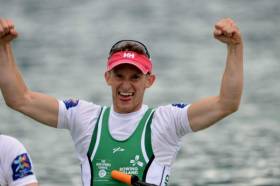Displaying items by tag: Ireland Trials
O'Donovan and O'Driscoll Given Big Test
#Rowing: Sanita Puspure and Paul O’Donovan were impressive winners of the single sculls tests at the Ireland trial at the National Rowing Centre today. Shane O’Driscoll and Mark O’Donovan won their pairs race, but only by 2.8 seconds from the very tall crew of Andy Harrington and Patrick Boomer.
Denise Walsh won the lightweight single sculls from Margaret Cremen. Aoife Casey was absent because of exams. The top women’s pair were Aifric Keogh and Emily Hegarty, while Aaron Keogh of Three Castles beat Rory O’Neill of Castleconnell in the junior single sculls.
McCarthy Tops Heat Rankings But UCD's Mulvaney Forced Out
Fintan McCarthy topped the single sculls rankings in the heats at the Ireland trial at the National Rowing Centre. The 20-year-old Skibbereen lightweight came in ahead of Daire Lynch and Gary O'Donovan. Jake McCarthy- Fintan's twin - was fourth. Sam McKeown and Chris Beck also made the A Final from the heats which were run on a time trial basis.
The men's pairs heats were overshadowed by an illness to Shane Mulvaney which forced his lightweight pair partnership with David O'Malley to pull out. Shane O'Driscoll and Mark O'Donovan won well.
Sanita Puspure was a clear winner in the women's singles heat, while UCC were the fastest women's pair.
Lightweight Four Fastest at Ireland Time Trial
#Rowing: The Ireland lightweight four was the fastest crew in the time trials this morning at the Ireland trial at the National Rowing Centre. Ranking on per centage of projected gold medal-winning time, the Shandon/Clonmel combination in the men’s junior double scull had the most impressive performance. Paul O’Donovan pulled out ill, while Claire Lambe has been injured, so Gary O’Donovan and Sinéad Jennings competed in the lightweight single. Both posted good times.
Ireland Trials Adopt Schedule Change
#Rowing: The final schedule for the Ireland trials this weekend at the National Rowing Centre has been released. The adult events are now sited primarily on the Sunday, with just the men’s under-23 heavyweight double sculls being added to the big junior programme on the Saturday, March 19th. The first time trials, for junior men’s pairs, start earlier than originally scheduled, at 8.30 am because of concerns about the weather. Finals for juniors are scheduled for the Saturday afternoon.

























































